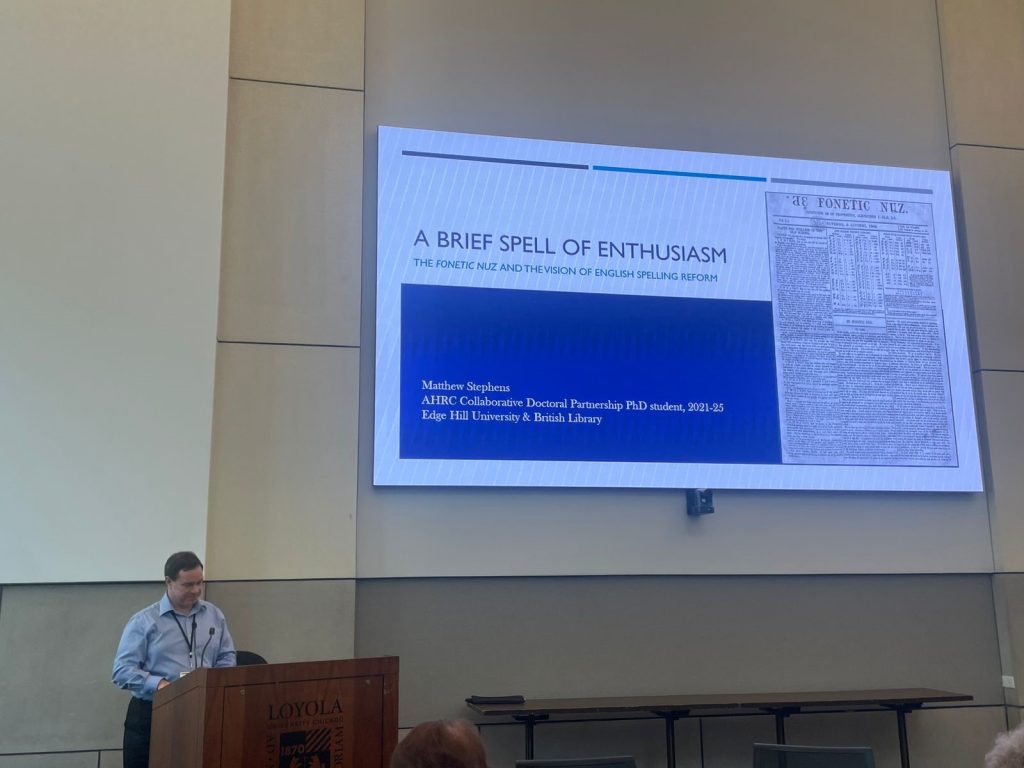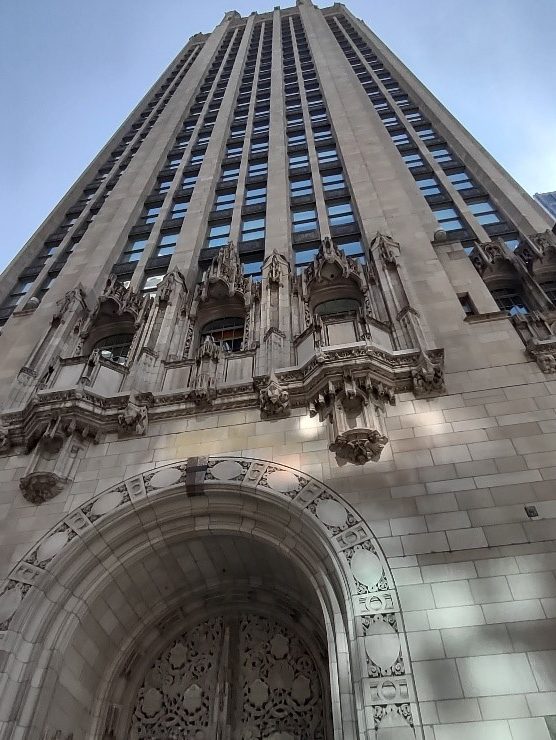
Just over a week ago, I returned from Chicago, USA, where I had the great pleasure of attending the annual conference of the Research Society for Victorian Periodicals (RA4VP) at Loyola University. The theme of this year’s gathering was ‘Voices and Visions of the Nineteenth-Century Periodical Press’. This was my first time abroad in over 20 years; a reluctant traveller, I was persuaded to brave the transatlantic journey by star American scholar Professor Linda Hughes, who wanted to propose a three-person panel themed ‘Failed Visions and Voices?’. Due to an essay I wrote a couple of years ago, which was fortunate to win the Rosemary VanArsdel Prize awarded annually by RS4VP and was recently published in Victorian Periodicals Review, my PhD work was thought to be a good fit for this panel, which also included former RS4VP President Professor Jennifer Phegley and was chaired by Russell Wyland.
Because of the star power of my fellow presenters, our well-attended panel session took place in Kasbeer Hall, Corboy Law Center – which meant that we were using a screen of almost cinematic dimensions! This was undoubtedly the largest screen upon which my work has appeared. Although a little daunting, it was a fantastic experience, firstly to share the platform with two such esteemed colleagues; and, secondly, to talk about the well-meaning but ultimately doomed experiment to demonstrate a revised orthography for the English language, The Fonetic Nuz. (See my blog entry https://www.matthewstephens.org.uk/?p=196 which deals with this in more detail.)
In addition to getting positive reviews on my conference paper, it was also thrilling that scholars from the UK, USA and Canada were kind enough to refer to my work (and especially my prizewinning essay) as having influenced their own research approaches. This is the kind of international impact of which I dreamt four years ago, when I first began ‘banging the drum’ for short-lived newspapers. It also emphasises the essential role of scholarly communities like RS4VP in sharing and disseminating ideas. I must, of course, pay tribute to the brilliant support I’ve had from Edge Hill University and the British Library throughout my PhD.
As for the Windy City itself, rather like this screen, everything seemed to be on a larger scale than we have in little old Britain. Here is a look up at the now-defunct century-old skyscraper that housed the Chicago Tribune for 80 years before being sold and converted to residential accommodation.

A nice feature is that, into the exterior walls, the builders included – and named – fragments from other buildings from around the world, including this donation (allegedly) from Edinburgh Castle, Scotland. As Scotland was the location of last year’s RS4VP conference, this was rather a lovely coincidence.

All in all, a very stimulating visit. As I approach the end of my doctoral studies, I can only hope that the future holds more opportunities like this…